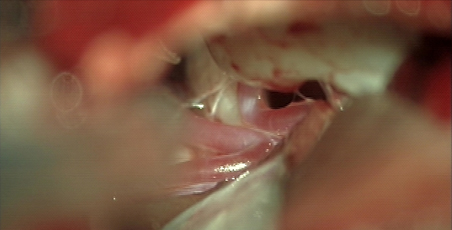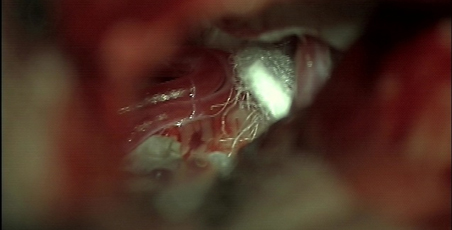After 10 Years, TGN Patient Finally Finds Relief
Helen Rock had suffered from recurrent episodes of intense right-sided facial pain, which sometimes didn’t allow her to perform even the simplest of things, like smile and speak
Before coming to Mount Sinai, Helen Rock had suffered from recurrent episodes of intense right-sided facial pain for more than 10 years. Although there would be pain-free episodes, she found herself guarding against activities that triggered the lightning-like shooting pain--such as smiling, speaking, and eating. Her syndrome was characteristic of trigeminal neuralgia (TGN).
 Helen tried multiple medications, which initially worked well, but she never achieved a lasting remission from the attacks. By the fall of 2010, the pain had increased in both frequency and severity. Finally, while on vacation, she had an episode that was so severe she was incapacitated, and she decided it was time to consider surgical options.
Helen tried multiple medications, which initially worked well, but she never achieved a lasting remission from the attacks. By the fall of 2010, the pain had increased in both frequency and severity. Finally, while on vacation, she had an episode that was so severe she was incapacitated, and she decided it was time to consider surgical options.
Treatment Options
Through a referral, Helen met with Joshua Bederson, MD, Mount Sinai’s Neurosurgery chair, who performs microvascular decompression (MVD) surgery to treat TGN. During their discussion, Dr. Bederson walked her through the MVD procedure as well as alternative treatment options, such as percutaneous balloon compression, radiofrequency rhizolysis, glycerol injection, and stereotactic radiosurgery.
MVD is a microsurgical operation. However, unlike the other procedures, which are all ablative (nerve damaging), MVD preserves the nerve and offers the best chance of a cure without permanent facial numbness. Surgeons treat the underlying cause of the trigeminal pain by displacing the artery or vein that is compressing the nerve, and then protect the nerve with a Teflon sponge to prevent recurrence.
Compression of the nerve isn't always visible on imaging, but Helen's MRI showed apparent neurovascular contact in the region of the trigeminal nerve root. After a thorough discussion of the nature of this procedure, the risks, indications, and alternatives, she decided to go ahead with surgery.
The Operation
Through a small opening behind the ear, Dr. Bederson exposed the trigeminal nerve at its entrance into the brain stem. Here he found it severely compressed by both an abnormal arterial loop and vein.

Dr. Bederson moved the blood vessels off the trigeminal nerve and used a small sponge to keep them apart.
A New Beginning
When Helen awoke from surgery, she was delighted to find that her TGN had resolved. Aside from some short-lived surgical pain, she has been pain free and off all pain medications ever since. Helen followed up with Dr. Bederson two weeks after surgery, at which point he cleared her to take a long planned trip to Aruba – pain-free for the first time in 10 years.
